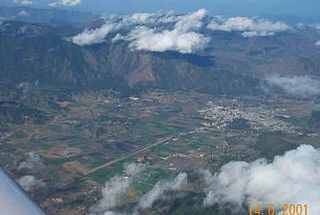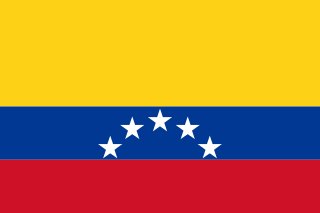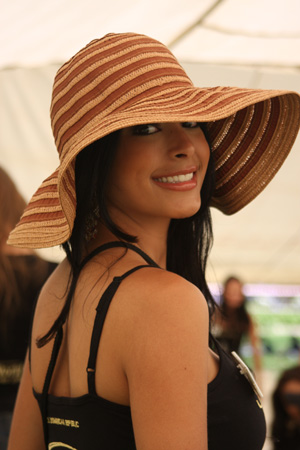
Transport in the Dominican Republic utilizes a system of roads, airports, ports, harbours, and an urban railway.

The Dominican Republic is divided into thirty–one provincias, while the national capital, Santo Domingo, is contained within its own Distrito Nacional.

La Vega is one of the 32 provinces of the Dominican Republic, located in north central of the country also known as Cibao. It is divided into 4 municipalities and its capital city is the namesake of La Vega. The province borders Espaillat and Hermanas Mirabal to the north, Duarte to the east, Monseñor Nouel to the south and Santiago to the west.

Santiago de los Caballeros, often shortened to Santiago, is the second-largest city in the Dominican Republic and the fourth-largest city in the Caribbean by population. It is the capital of Santiago Province and the largest major metropolis in the Cibao region of the country. Santiago is the largest Caribbean city that is not a capital city, and it is also the largest non-coastal metropolis in the Caribbean islands. The city has a total population of 771,748 inhabitants (2022). Santiago is located approximately 155 km (96 mi) northwest of the capital Santo Domingo with an average altitude of 178 m (584 ft).

The Yuna River is the second longest river in the Dominican Republic, stretching for a length of 185.17 km. It forms within the Cordillera Central mountain range southwest of the city of Bonao in Monseñor Nouel Province, and passes through the fertile Cibao Valley. As the river courses north-northeast, it passes through the city of Bonao. Southwest of Cotuí, the river reaches Hatillo Dam before turning northeast then east as it reaches its mouth at the Samaná Bay in the northeast part of the Dominican Republic. Like many rivers in the Dominican Republic, the name is derived from the Taíno language.

The Cibao, usually referred as "El Cibao", is a region of the Dominican Republic located at the northern part of the country. As of 2009 the Cibao has a population of 5,622,378 making it the most populous region in the country.

The Republic of Spanish Haiti, also called the Independent State of Spanish Haiti was the independent state that succeeded the Captaincy General of Santo Domingo after independence was declared on November 30, 1821 by José Núñez de Cáceres. The republic lasted only from December 1, 1821 to February 9, 1822 when it was invaded by the Republic of Haiti.

Cabrera is a town in María Trinidad Sánchez province, Dominican Republic. It is located at the eastern end of the country's north coast, at the western extreme of the Scottish Bay, 130 kilometers north of Santo Domingo.
DR-1 is a dual carriageway highway that forms part of the five designated national highways of the Dominican Republic. DR-1 provides a fast connection between Santo Domingo, the capital, on the southern coast, and the second city Santiago and the rest of the northerly Cibao region, one of the country's main regions.
Señorita República Dominicana 1956 was held on January 29, 1956. There were 24 candidates who competed for the national crown. The winner represented the Dominican Republic at the Miss Universe 1956. On the top 10 they showed their evening gown so they could go to the top 5. In the top 5 they would answer more questions. This edition would send their first delegate to Miss Universe.

The Miss Mundo Dominicana 2008 pageant was held on July 27, 2008. This year only 16 candidates were competing for the national crown. The chosen winner will represent the Dominican Republic at the Miss World 2008. The first runner up will represent the Dominican Republic in Miss America Latina 2009. Its national director, Belkys Reyes is a "Miss trainer" who has prepared models like Amelia Vega.
Señorita República Dominicana 1962 was held on January 29, 1962, when 26 candidates competed for the national crown. The winner represented the Dominican Republic at the Miss Universe 1962. The first runner up would enter Miss International 1962. Only the 25 provinces and 1 municipality entered. The top ten contestants wore evening gowns and answered questions to get through to the top 5, where they answered more questions.
The Miss Dominican Republic is a national beauty pageant in the Dominican Republic.

The Archaeological and Historical National Park of Pueblo Viejo, La Vega, in the La Vega Province of the Dominican Republic, includes the old city of Concepción de la Vega, and the Pueblo Viejo gold mine. This site was added to the UNESCO World Heritage Tentative List on November 21, 2001 in the Cultural category.
The Miss Mundo Dominicana 2006 pageant was held on July 10, 2006. Only 16 candidates competed for the national crown. The chosen winner represented the Dominican Republic at the Miss World 2006. The runners-up could enter different small international pageants.
Carlina Durán Baldera is a Dominican model who won the national crown of Miss Dominican Republic 2012, initially giving her the right to compete in Miss Universe 2012 representing her country in December 2012. After representing her home province of La Vega in the 2012 Miss Dominican Republic, Carola was crowned by Miss Dominican Republic 2011 Dalia Fernandez. She later got dethroned for admitting she had been married in 2009.
Miss Mundo Dominicana 2011 was held September 20, 2011, in Renaissance Auditorio de Festival del Hotel Jaragua, Santo Domingo. The Miss Mundo Dominicana winner represented the Dominican Republic in Miss World 2011, the Miss RD Internacional entered Miss International 2011, Miss Supranational RD entered Miss Supranational 2012, and the Miss Tourism Queen RD entered Miss Tourism Queen International 2011. The first runner up entered the Reinado Internacional del Café 2012. The winner was crowned by Sofinel Báez, Miss International Dominicana 2010.
Winifer María Fernández Pérez is a Dominican female volleyball player. With her club Mirador she competed at the 2015 FIVB Club World Championship. She became well known after a video and later some photos of her playing and training, and personal photos of her--some of them fake--went viral in July 2016.

Julio Arturo Grullón Julia was a Dominican painter, ophthalmologist, and educator. A student of influential Puerto Rican intellectual Eugenio María de Hostos, Grullón is considered one of the forerunners of Dominican national art, and remembered as one of the founders of Dominican surgery.

Miss Grand Dominican Republic 2016 was the inaugural edition of the Miss Grand Dominican Republic beauty pageant, held on July 5, 2016, at the Cibao Grand Theatre located in Santiago de los Caballeros, Dominican Republic. Candidates from twenty provinces and municipalities of the country competed for the title, of whom the representative of Dajabón Province, Lucero Arias, was announced the winner, and received cash of RD$400,000 Dominican peso as a reward, while Laura Cruz of Dominican communities in USA and Reisy Sobrino of Santo Domingo Oeste were named the runners-up.






































